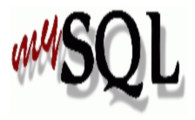| Main Categories |
|
| | More Categories | |
|
|
|
|
Copyright
© 1998-2005
(Free Stuff)
All Rights Reserved
NOTICE: We collect personal information on this site. Find out more
how we use this information and see our Privacy Policy!
|
Editor: Paul Grimes
Free Stuff Home
AUP Policies
|
|
|
|
|
|
Last Update: Wednesday, December 30, 2015 At: 9:34:20
(Total Listings: 8) |
PHP - MySQL Tutorial
This PHPMySQL Tutorial written by Graeme Merrall is covered over three chapters. The first chapter covers developing database hubs and creating simple scripts for web pages. The second chapter discussed using the PHPMySQL constructs to manipulate information from the database. The third chapter illustrates the conversion of simple data-driven site into a useful application, covering validation techniques and several coding guidelines.
|
 |
|
(Voting:
0.00 From 5
On
0
Vote!)
Vote!
Why? (Date Listed Sun Nov 4 13:03:21 2007) |
Setting Up A Mysql Based Website - Part 2
This tutorial is the second part of the guide for setting up a MySQL based website. It is authored by Andrew Chen in 1999.It covers the creation of a website using MySQL as a user-authentication database. The tutorial discusses how to perform user authentication via MySQL. It provides the steps to set up the database using mod_auth_mysql. Thee guide also provides tips on protecting a directory from malicious users.
|
 |
|
(Voting:
0.00 From 5
On
0
Vote!)
Vote!
Why? (Date Listed Sun Nov 4 13:03:21 2007) |
Setting Up A Mysql Based Website - Part 1
This tutorial is the first part of the guide for setting up a MySQL based website. It is authored by Andrew Chen in 1999. The tutorial demonstrates setting up a guestbook, using Perl and MySQL backend. This article also illustrates the powerful features of the Perl scripting language and those of MySQL. It discusses the tools used, the procedure for setting up the database and writing the Perl application.
|
 |
|
(Voting:
0.00 From 5
On
0
Vote!)
Vote!
Why? (Date Listed Sun Nov 4 13:03:21 2007) |
SITE DOWN ------------------------------------- Data Integrity Using My'S'Q'L And P'H'P (Part 2)This article is the second part of the tutorial about data integrity in the case of relational database design such as MySQL and PHP. It has been contributed by Mark Gerow. The article provides a crash course in data integrity. The article discusses ways to implement "referential" integrity programmatically, since MySQL does not support referential integrity at the database level. It provides several examples on implementing artificial primary key.
|
|
|
(Voting:
0.00 From 5
On
0
Vote!)
Vote!
Why? (Date Listed Sun Nov 4 13:03:21 2007) |
SITE DOWN ------------------------------------- Data Integrity Using My'S'Q'L And P'H'P (Part 1) This article is the first part of the tutorial about data integrity in the case of relational database design such as MySQL and PHP. It has been contributed by Mark Gerow. The article provides a crash course in data integrity. The article starts with an overview of relational concepts. It then illustrates each of these concepts with simple examples. It provides the most basic level of "entity" Integrity checking.
|
|
|
(Voting:
0.00 From 5
On
0
Vote!)
Vote!
Why? (Date Listed Sun Nov 4 13:04:26 2007) |
SITE DOWN ------------------------------------- The Complete My'S'Q'L Tutorial This article discusses the security system in MySQL. It has been contributed by Brian Linebaugh. The article introduces MySQL and discusses the main components of user security system. The prerequisite for this article is a basic understanding of Relational Database Management Systems (RDBMS). It illustrates how database security is implemented and enforced in MySQL. It shows how to develop a security strategy for a MySQL server.
|
|
|
(Voting:
0.00 From 5
On
0
Vote!)
Vote!
Why? (Date Listed Sun Nov 4 13:05:24 2007) |
MySQL Introduction
This article is an introduction to MySQL database. It has been coauthored by David Axmark and Michael Widenius in 1999. It includes information on the history and origins of MySQL database. It takes a look at the present structure and usage of the database, and puts forth an understanding of the future applications and demand of the MySQL database.
|
 |
|
(Voting:
0.00 From 5
On
0
Vote!)
Vote!
Why? (Date Listed Thu Jan 1 00:00:00 1970) |
|
|
|
|
|

